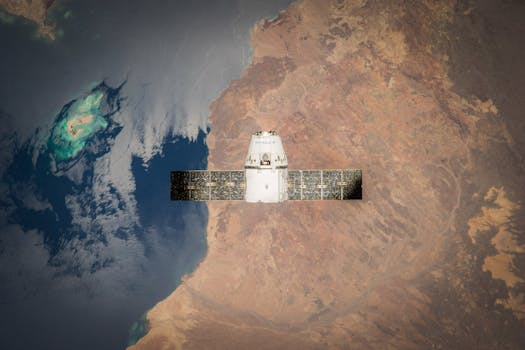
Orbiting Innovations: Exploring the Latest in Earth-Observing Technology
Orbiting Innovations: Exploring the Latest in Earth-Observing Technology is a rapidly evolving field that has revolutionized our understanding of the Earth and its systems. With the help of satellite imaging and remote sensing technologies, scientists and researchers can now monitor and study the planet in unprecedented detail.
The latest advancements in earth-observing technology have enabled us to track changes in the environment, predict weather patterns, and even detect natural disasters before they occur. For instance, satellite imaging has been used to monitor deforestation, track ocean currents, and detect changes in sea level.
History of Earth-Observing Technology
The concept of earth-observing technology dates back to the 1960s, when the first weather satellites were launched into space. Since then, the field has undergone significant transformations, with the development of new technologies and sensors that have enabled us to collect more accurate and detailed data about the planet.
One of the major breakthroughs in earth-observing technology was the launch of the Landsat satellite in 1972, which was designed to collect data about the Earth’s land surfaces. The Landsat satellite was equipped with a multispectral sensor that could detect different wavelengths of light, allowing scientists to study the planet’s vegetation, soil, and water resources in unprecedented detail.
Current Trends and Applications
Today, earth-observing technology is used in a wide range of applications, from environmental monitoring to disaster response. For example, satellite imaging is used to track the movement of wildfires, detect oil spills, and monitor the spread of diseases.
Remote sensing technologies are also being used to study the Earth’s climate, including the monitoring of sea level rise, glacier melting, and changes in ocean currents. Additionally, earth-observing technology is being used to study the planet’s natural resources, including water, minerals, and forests.
Future Directions and Challenges
As earth-observing technology continues to evolve, there are several challenges that need to be addressed, including the development of more advanced sensors and platforms, as well as the need for more efficient data processing and analysis techniques.
Despite these challenges, the future of earth-observing technology looks promising, with several new missions and initiatives planned for the coming years. For example, the European Space Agency’s Copernicus program is a major earth-observing initiative that aims to provide comprehensive and continuous coverage of the planet.
In conclusion, Orbiting Innovations: Exploring the Latest in Earth-Observing Technology is a rapidly evolving field that has the potential to transform our understanding of the planet and its systems. With the help of satellite imaging and remote sensing technologies, scientists and researchers can now monitor and study the planet in unprecedented detail, enabling us to better understand and manage the Earth’s resources.
The latest advancements in earth-observing technology have enabled us to track changes in the environment, predict weather patterns, and even detect natural disasters before they occur. As the field continues to evolve, it is likely that we will see even more innovative applications of earth-observing technology, from environmental monitoring to disaster response.
Overall, the future of earth-observing technology looks bright, with several new missions and initiatives planned for the coming years. As we continue to explore and develop new technologies, we can expect to see even more exciting advancements in the field, enabling us to better understand and manage the planet’s resources.



